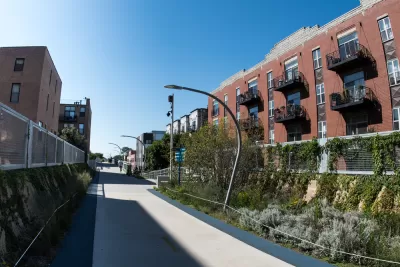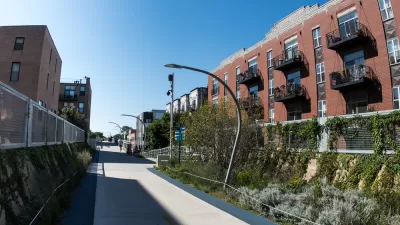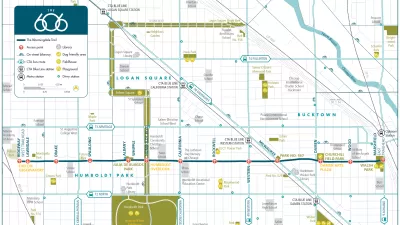Because the rails to trails project left housing up to the market, rising rents were inevitable, claims a new report.

Logan Square rents and property values have been on the rise, particularly in the part of the neighborhood around the 606. Whether or not the trail and its planners deserved any of the blame for that has been a subject of debate in the area for some time. A new report argues that it was a cause of rising costs and its were to blame. “Lower-cost housing was bound to be pushed out of neighborhoods along the 606 trail by more expensive replacements because of the way the rails-to-trails project was planned, a pair of academics claim in a scholarly journal,” Dennis Rodkin reports in Crain’s Chicago Business.
University of Illinois Professor Alessandro Rigolon contends that the project’s builders were content to see it as a purely parks and infrastructure venture and to leave housing prices to ride the market. Rigolon and his co-author, Professor Jeremy Nemeth of the University of Colorado, even titled the piece after a quote from a representative for the Trust for Public Land that did much of the work on the project who said, “We're not in the business of housing.”
Critics of the report (from the Trust for Public Land and elsewhere) point out that the neighborhood was already gentrifying and that some of the rising land value came from the neighborhood recovering from the great recession. Useful context to be sure, but not enough to convince observers that the trail didn’t force out residents.
FULL STORY: Was gentrification around the 606 inevitable?

Planetizen Federal Action Tracker
A weekly monitor of how Trump’s orders and actions are impacting planners and planning in America.

San Francisco's School District Spent $105M To Build Affordable Housing for Teachers — And That's Just the Beginning
SFUSD joins a growing list of school districts using their land holdings to address housing affordability challenges faced by their own employees.

The Tiny, Adorable $7,000 Car Turning Japan Onto EVs
The single seat Mibot charges from a regular plug as quickly as an iPad, and is about half the price of an average EV.

Seattle's Plan for Adopting Driverless Cars
Equity, safety, accessibility and affordability are front of mind as the city prepares for robotaxis and other autonomous vehicles.

As Trump Phases Out FEMA, Is It Time to Flee the Floodplains?
With less federal funding available for disaster relief efforts, the need to relocate at-risk communities is more urgent than ever.

With Protected Lanes, 460% More People Commute by Bike
For those needing more ammo, more data proving what we already knew is here.
Urban Design for Planners 1: Software Tools
This six-course series explores essential urban design concepts using open source software and equips planners with the tools they need to participate fully in the urban design process.
Planning for Universal Design
Learn the tools for implementing Universal Design in planning regulations.
Smith Gee Studio
City of Charlotte
City of Camden Redevelopment Agency
City of Astoria
Transportation Research & Education Center (TREC) at Portland State University
US High Speed Rail Association
City of Camden Redevelopment Agency
Municipality of Princeton (NJ)





























